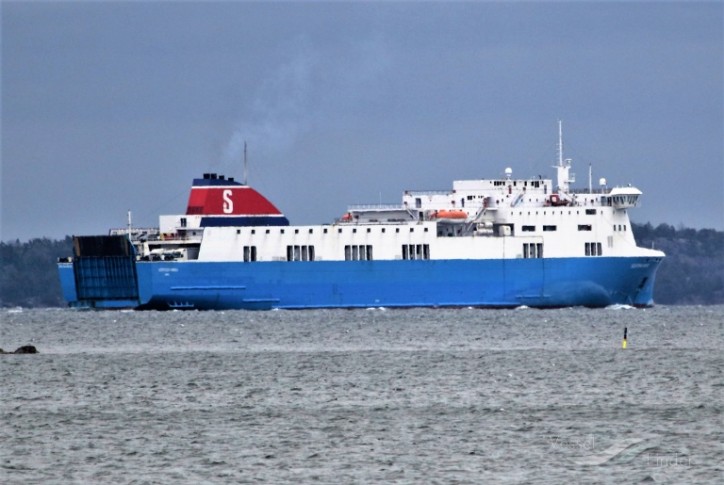To strengthen its business position in Central Europe and Scandinavia, as well as to serve the growing demand, the company Stena Line now implement a more frequent ferry timetable which is more adapted to client needs and also provides a long-term growth-orientated solution with an additional ferry and focus on two main routes.
“As the demand for the ferry transports is rapidly increasing, we are developing and enhancing our services by modifying our ferry timetables and introducing an additional ferry. We are elaborating a new business concept focusing on Northern Baltic Sea region development, which will strengthen our market position in the Baltic Sea with two main routes to Sweden and Germany”, says Erik Thulin, Trade Director Baltic Sea North.

Passenger/Ro-Ro Cargo Ship Stena Flavia - Image courtesy: Pekka Järvinen
Ventspils will be positioned as the gateway to Scandinavia, thus reinforcing the route Ventspils-Nynäshamn. The ferry Stena Flavia will be permanently redirected to this route, while previously it also operated between Ventspils and Travemünde. Stena Flavia will operate the route together with Scottish Viking. The number of ferry departures will be increased by 30 %. Starting from 3 January 2017, instead of the usual 18 weekly crossings, 24 crossings per week will be available on this route.

Passenger/Ro-Ro Cargo Ship Scottish Viking - Image courtesy: Anders
The ferry crossing from Ventspils to Travemünde will be redirected to Liepaja. In turn, Liepaja will be the main port connecting Latvia to the western part of Central Europe. An additional ferry will be introduced to this route to Germany, increasing the number of crossings by 25 %. Starting from 3 January 2017, the route will provide eight crossings per week. The route will be operated by Urd and Stena Nordica. Stena Nordica will be taken into operation during spring and until then Stena Gothica, operating Göteborg-Frederikshavn, will be a relief ship. The ferry crossing from Liepaja to Nynäshamn will be transferred to Ventspils.
“The changes in ferry routes and schedules constitute a strategically important step in order to develop and reinforce two large and significant transportation corridors – from Ventspils to Scandinavia and from Liepaja to Central Europe, allowing the us to improve and strengthen our position in different parts of Europe, thus ensuring long-term growth, as well as providing an ever-broader range of services to our customers”, says Erik Thulin.
Source: Stena Line